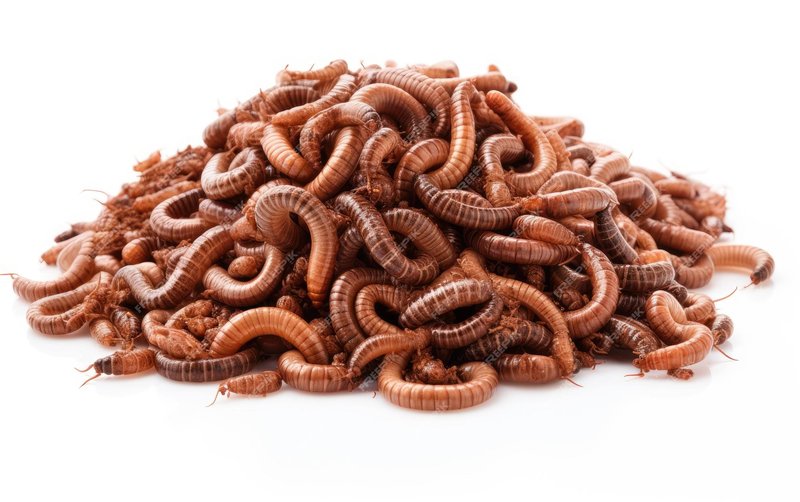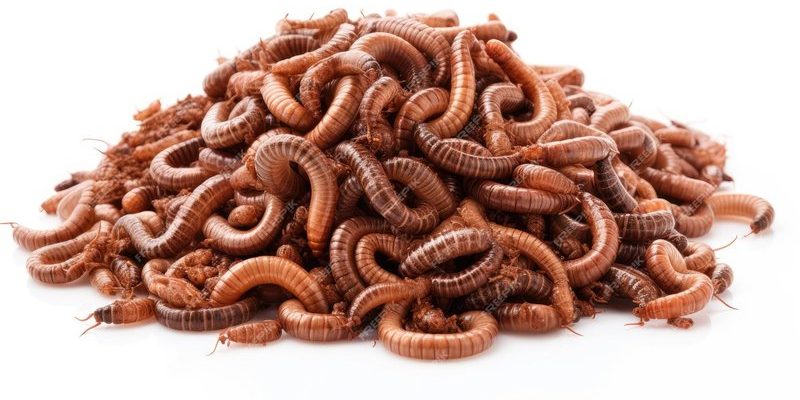
Identifying microworms can feel a bit like being a detective. You need to know where to look, what to look for, and how to recognize them among all the other tiny critters. In this guide, I’ll walk you through everything you need to know, from their habitats to how to spot them effectively. Grab a cup of coffee, and let’s dig into the world of microworms!
What Are Microworms?
Before diving into how to identify microworms in their natural habitat, let’s unpack what they really are. Microworms are tiny nematode worms that typically measure just a few millimeters in length. They belong to the family Panagrellus and are known for their long, thin bodies that can be somewhat transparent. This transparency can actually make spotting them a bit tricky.
You might be wondering why these little guys matter. Microworms are often used in aquaculture and as a food source for small fish and other aquatic animals. They play an essential role in breaking down organic matter, which contributes to healthy soil and ecosystems. So, understanding how to identify them can help you see the interconnectedness of life, even on a micro-scale.
Where to Look for Microworms
Finding microworms isn’t about searching high and low like you would for a lost pet. Instead, it’s all about checking the right spots. Microworms thrive in damp environments, especially in soil, compost, or decaying organic matter. Here are some prime locations to start your search:
- Compost Piles: These are a goldmine for microworms. As organic materials break down, they create a rich habitat for these critters.
- Garden Soil: Look beneath the surface of your garden soil, especially if it’s moist. They love places that have lots of decaying leaves and other organic materials.
- Potted Plants: Check the soil in potted plants that might be overwatered or have poor drainage, as this creates ideal conditions for microworms.
When you’re out and about, keep in mind that microworms prefer temperatures between 70°F and 80°F. So, if you’re in a cooler climate, your chances may be lower.
Identifying Microworms by Size and Shape
So, how do you actually recognize microworms when you find them? These worms are generally about 1 to 2 millimeters long and have a very thin, elongated shape. They’re often a pale yellow or white color, making them hard to spot against the soil or compost.
If you’re looking for them in a pile of organic matter, here’s a little trick: Look for tiny wiggling movements. Microworms move in a serpentine fashion, so if you see a squiggly line in your compost, you may just have found a microworm!
Remember, they’re a lot smaller than earthworms, so don’t expect them to be easily seen without a closer look. Using a magnifying glass can really help you appreciate these tiny creatures and see the finer details of their shape.
Using the Right Tools for Identification
To effectively identify microworms, having the right tools at your disposal can make a huge difference. While you don’t need a full lab setup, a few simple items can enhance your searching experience:
– Magnifying Glass or Hand Lens: This will help you see the microworms clearly since they’re so small.
– Plastic Container: Use this to collect samples of soil or compost. You can then examine it closely without disturbing the environment.
– Tweezers: If you need to pick out specific bits of organic matter to inspect, a pair of tweezers can be handy.
When using these tools, be gentle. You don’t want to damage the habitat you’re exploring. It’s all about observation, not destruction.
Common Mistakes When Searching for Microworms
Even the most experienced explorers can make mistakes. Here are some common pitfalls to avoid when searching for microworms:
1. Ignoring the Environment: Microworms are picky about their habitat. If you’re looking in dry soil or bright sunlight, you’re unlikely to find them. Stick to damp, shaded areas.
2. Overlooking Details: These little guys can easily blend in with other tiny soil inhabitants. Take your time and watch for movement, as it’s the best indicator of microworms.
3. Failing to Use Tools: Don’t underestimate the power of a good magnifying glass. It can turn a frustrating search into a successful one.
By being mindful of these mistakes, you’ll improve your chances of spotting these fascinating worms!
Why Identifying Microworms Matters
Identifying microworms isn’t just a fun exercise for nature lovers. It’s crucial for various reasons, especially in gardening and aquaculture.
– Soil Health: Microworms help break down organic matter, enriching the soil. If you can identify them, you’ll understand better how your composting efforts contribute to a healthy ecosystem.
– Feeding Fish: If you’re into aquariums or fishkeeping, knowing how to identify and cultivate microworms can provide a fresh food source for your fish—especially for fry that require tiny food particles.
– Biodiversity Awareness: Understanding these tiny creatures contributes to your overall awareness of biodiversity. Every organism, no matter how small, plays a role in our environment.
So, taking the time to learn about microworms is definitely worthwhile!
Wrapping Up Your Discovery
Now that you understand how to identify a microworm in its natural habitat, it’s time to put your knowledge into action. Remember, being patient and observant is key. Whether you’re digging through your compost pile or examining the soil beneath a damp leaf, take your time and enjoy the process.
Embrace your role as a nature detective, and appreciate these small creatures for the important roles they play. Every little bit of knowledge helps us understand the world better. So, get outside and see what tiny wonders await you, starting with the elusive microworm!

